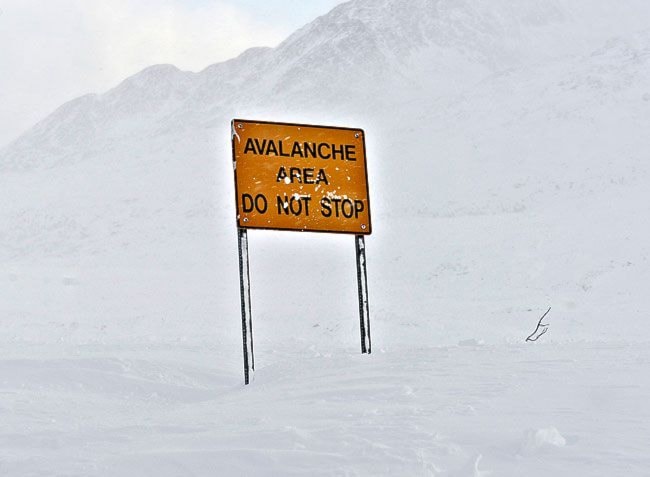“Low probability, high consequence.” That’s how a public avalanche forecaster describes the current avalanche risk in the White Pass.
Revelstoke-based forecaster Grant Helgeson, of Avalanche Canada, built the Yukon Avalanche Association’s first forecast of the season using data from a Yukon-based field crew.
“The place has seen a lot of wind, as per usual, and so it’s kind of got the classic cold shallow snowpack with a hard slab,” said Helgeson.
“What that means is that it’s kind of hard to trigger that hard slab, it’s probably pretty stubborn, but you do need to keep it in your mind as you travel in the mountains. There’s a decent amount of snow on the ground, upwards of a metre especially in the White Pass - when you have those kind of conditions it’s important to be mindful of thin spot triggering.”
Helgeson said that while triggering an avalanche in these conditions is unlikely, if one is triggered it could be very large.
“If you’re sticking to the thick parts of the snowpack and trying to find the most well supported and concave terrain that you can, you’re probably going to be alright.”
But, he added, “people should be aware that there could be very large and deep avalanches.”
The Yukon Avalanche Association is one week into its 2015 avalanche forecast program.
For the fourth year in a row, the association has put a team of avalanche technicians into the field to assess conditions, gather data, and build a forecast for Yukoners - with support from Avalanche Canada.
This year’s program got started late. In past years, the forecasts ran from December to early May. But a funding gap meant that for several months, the viability of a 2015 program was in doubt.
“We had initially started with some funding from ... the national search and rescue secretariat’s new initiative fund - the key words in there being new initiative,” said Alison Perrin, the vice president of the Yukon Avalanche Association. That fund covered the operation’s first three seasons, but it ran out last year.
Yukon’s Department of Community Services announced a $60,000 contribution in early December, allowing this year’s program to go ahead.
Highways and Public Works is also providing in-kind support this year. The field team is based out of the highway camp at Fraser throughout the season, and the avalanche association had been paying to use the space. “They waived that, so that’s a significant support,” said Perrin.
The 2015 forecast will be managed a little bit differently than in past years. This year’s field team is made up of two avalanche technicians: returning tech Matt Holmes, a junior member of the 2014 team, and lead tech Diana Saly, who is new to the territory but has prior experience elsewhere.
Holmes and Saly will work in the field and feed their data and observations to an experienced avalanche forecaster in Revelstoke, like Helgeson, who will build the forecast itself.
In 2014, three Yukon-based techs shared the work, and the two senior members of the team were more heavily involved in the production of the forecast.
“This year, because Matt is still fairly new in his role, and Diana is new to the territory, the forecasters in Revelstoke will be doing more of the forecasting with the goal of mentoring Diana and Matt as the season goes forward,” said Perrin.
The field techs will often be visible along the South Klondike Highway in the White Pass area. “People should feel free to go over and say hi, talk to them and ask them questions.”
The association will issue a conditions report every Thursday and a complete forecast every Monday and Friday, via its website, yukonavalanche.ca
